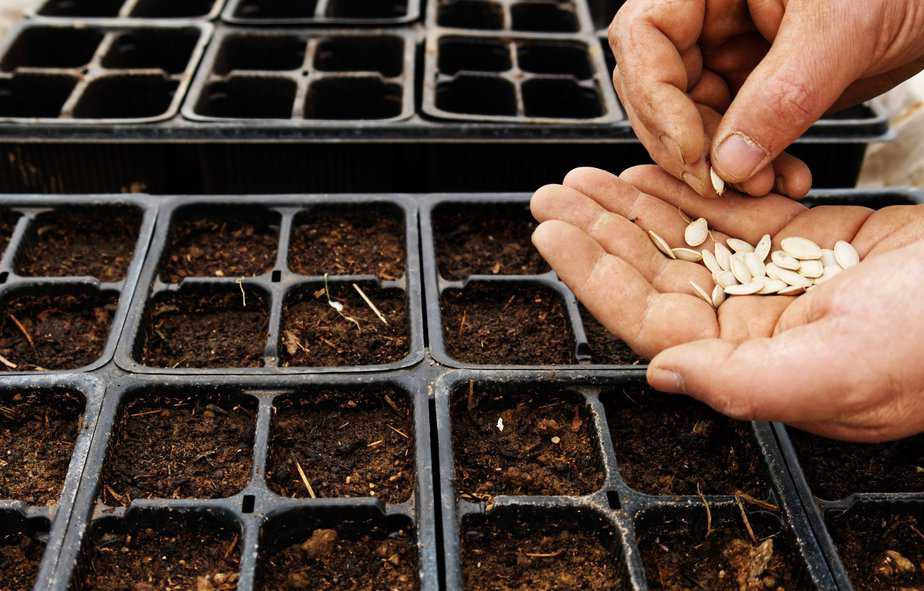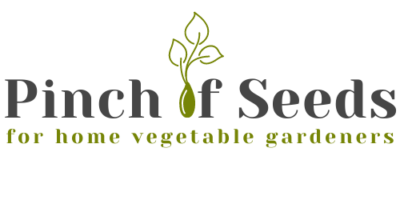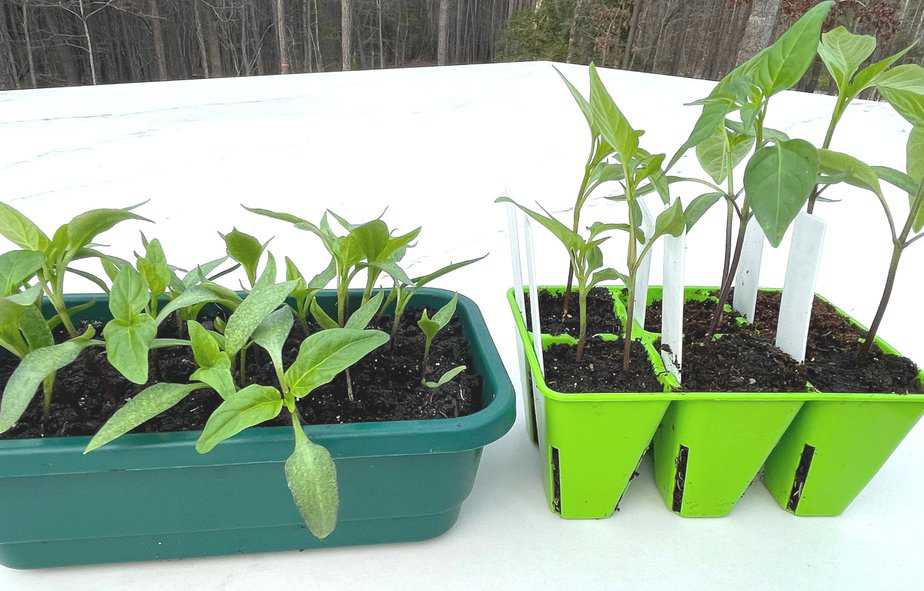Hey there, fellow garden enthusiasts! Today, I’m sharing a few interesting facts and observations about two methods of seed starting in seed trays. If you’ve ever wondered whether to sprinkle a bunch of seeds in one big propagation tray or to give them a more spacious abode in a plug cell tray, you’re in the right place. I’ll compare these two popular methods: starting multiple seeds in one seedling propagation tray versus starting just 2 seeds in each cell of a 6-cell tray. Let’s find out which method might make your gardening life a bit easier!
Before we compare the two seed starting tray options, first let’s talk if we need a seed starting tray. Can’t you just use an egg carton or a milk jug?
Why Use Seed Trays?
While DIY methods like using egg containers or milk jugs for seed starting can be resourceful and eco-friendly, seed starting trays offer distinct advantages that can significantly enhance your gardening success:
- Optimal Growth Conditions: Seed trays allow you to tailor the environment to your seeds’ needs, ensuring better control over soil, moisture, temperature, and light.
- Higher Germination Rates: The controlled environment in seed trays typically results in higher germination rates than the more variable conditions of DIY methods.
- Protection Against Pests: Using seed trays, especially indoors, shields your vulnerable seeds and seedlings from pests and outdoor elements.
- Space Efficiency: Seed trays are designed to maximize space, allowing you to start many plants in a compact area.
- Ease of Monitoring and Care: Consolidating your seedlings in trays makes it easier to water, monitor, and care for them.
- Transplanting Ease: Seedlings in trays are generally easier to transplant with minimal disturbance, leading to better establishment in your garden.
While repurposing items like egg containers or milk jugs is commendable for its sustainability, seed-starting trays are specifically designed to give your seeds the best start, making them a worthwhile investment for serious gardeners. If you’re aiming for efficiency, higher success rates, and ease of care, opting for seed-starting trays can be a game-changer in your gardening journey.
Now let’s go back to the main conversation.
Method 1: Multi-Seed in One Propagation/Flat Tray
First, let’s discuss the multi-seed method. This method involves scattering several seeds into a single propagation tray or germination flats. The benefits are that you’re likely to get a lot of seedlings sprouting, and it’s a real space-saver initially. But there’s a catch—as these little guys start to grow, they might get a bit too cozy, leading to overcrowding. You’ll need to be a gentle bouncer, thinning out the crowd so the most vigorous seedlings can thrive.

Method 2: Two Seeds Per Cell in a Cell Pack
On the other side of the ring, we have the 2-seed method. This one is more reserved, with just two seeds sown in each cell of a 6-cell tray. It’s like giving your seeds a semi-private room instead of a dormitory. The perks? Less competition for resources and an easier time managing your baby plants. However, it may feel wasteful if both seeds germinate, as you’ll have to thin them out, choosing the more robust seedling to continue its journey.
Comparison and Analysis
Now, let’s compare these methods. We’ll see how they fare regarding germination rates, space efficiency, ease of management, and the overall health of the seedlings. I’ll share some snapshots of my pepper seed-starting adventure, showing how each method pans out over time.
As you can see, both the trays are filled with the same seed starting mix and are growing pepper seedlings that were sown on the same day. The seedlings in single cells are much robust and healthy with even growth, while the seedlings in the propagation tray with mass planting are uneven and not so developed. In fact, the seedlings in the 6-cell trays are ready for their regular seedling fertilizer treatments, the ones in the other container are not!
Pros and Cons:
To sum it up, here’s a quick rundown of the pros and cons of each method. Whether you’re tight on space, looking to save time, or just curious about trying something new, this comparison will help you weigh your options.
| Aspect | Multi-Seed in One Tray | Dual-Seed in 6-Cell Tray |
| Space Efficiency | High initial space efficiency | Less space-efficient initially |
| Germination Rates | Potentially higher germination rates | Might have lower germination rates |
| Ease of Management | Requires thinning, which can be time-consuming | Easier to manage without the need for thinning |
| Seedling Health | Risk of overcrowding and weaker seedlings | Generally healthier seedlings due to less competition |
| Resource Use | Efficient use of soil and trays | May use more soil and trays initially |
| Wastage | Less wastage if thinning is done carefully | Potential wastage due to thinning out an extra seedling |
| Risk of Disease | Higher risk due to overcrowding | Lower risk as there’s more space for air circulation |
| Ease of Transplanting Outside | More delicate due to potential root disturbance during thinning | Easier as each seedling has its own space |
| Effect on Plant Growth | Potentially uneven growth due to competition | More uniform growth as competition is minimized |
| Suitability | Ideal for experienced gardeners or those with limited space | Suited for beginners or those preferring a straightforward approach |
Conclusion:
So, what’s the verdict? Well, it depends on your gardening style and the resources available to you. Whether you’re team multi-seed or leaning towards the dual-seed approach, the key is to find joy in the process and learn what works best for you and your garden.
What do you think?
I’d love to hear about your seed-starting experiences! Which method do you prefer, and why? Drop your thoughts in the comments below, and let’s keep the conversation growing. Happy gardening!
Remember, there’s no one-size-fits-all answer in gardening – it’s all about experimenting, learning, and enjoying the green journey. If you want to join the other readers to exchange your experiences, join our Facebook group!

